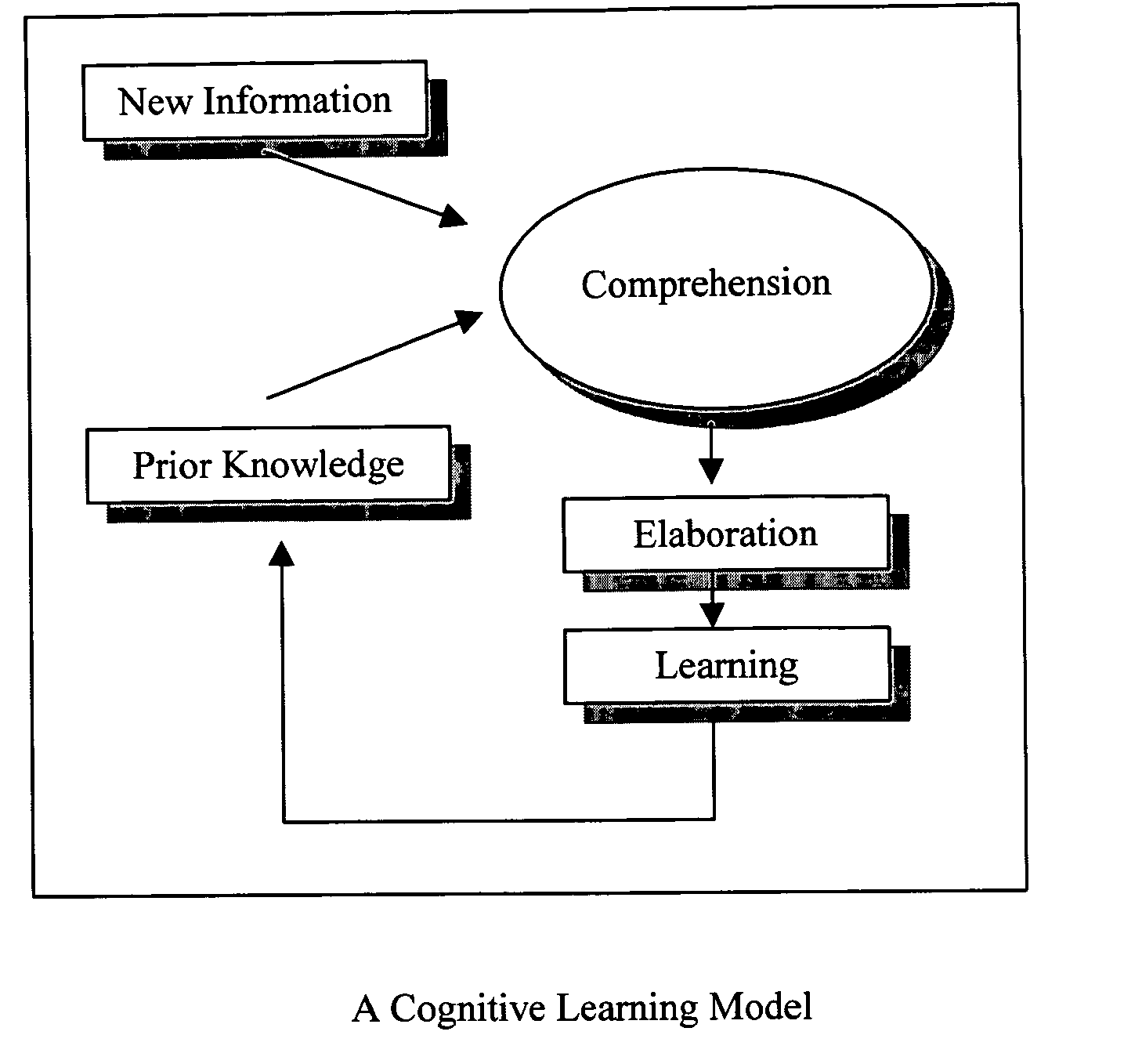Predictive artificial intelligence and pedagogical agent modeling in the cognitive imprinting of knowledge and skill domains
a technology of cognitive imprinting and prediction artificial intelligence, applied in the direction of reading, instruments, electrical appliances, etc., can solve the problems of increasing the difficulty of utilizing the decision-making power of the computer to provide more effective learning environments, affecting the learning experience of students, and many of today's computer-based learning systems are not interesting to students. , to achieve the effect of more accurate predictions about new students
- Summary
- Abstract
- Description
- Claims
- Application Information
AI Technical Summary
Benefits of technology
Problems solved by technology
Method used
Image
Examples
specific embodiments
[0072] One embodiment of this invention is a system that delivers instruction to computers over a digital network such as the Internet. This includes instruction delivery to computers and handheld devices via wire and wireless means such as Ethernet and WiFi. This embodiment does not preclude the use of this invention in other networked and non-networked digital environments, nor delivery to alternative digital devices.
[0073] In this embodiment, functionality is implemented on both the student's computer or ‘Client’ and on the server computer or ‘Server’. The server contains all program code and data stored in permanent disk memory and program memory. The Server transfers program code and data to the Client as needed.
[0074] In the present embodiment the major components of the Server consist of a AI Engine, Learning Management System (LMS), Activities and Tests, Agents, web server, database storage, and the state of cognitive models.
[0075] The Client receives appropriate instruct...
PUM
 Login to View More
Login to View More Abstract
Description
Claims
Application Information
 Login to View More
Login to View More - R&D
- Intellectual Property
- Life Sciences
- Materials
- Tech Scout
- Unparalleled Data Quality
- Higher Quality Content
- 60% Fewer Hallucinations
Browse by: Latest US Patents, China's latest patents, Technical Efficacy Thesaurus, Application Domain, Technology Topic, Popular Technical Reports.
© 2025 PatSnap. All rights reserved.Legal|Privacy policy|Modern Slavery Act Transparency Statement|Sitemap|About US| Contact US: help@patsnap.com



